What is CisionOne and How Do You Use it for Marketing?
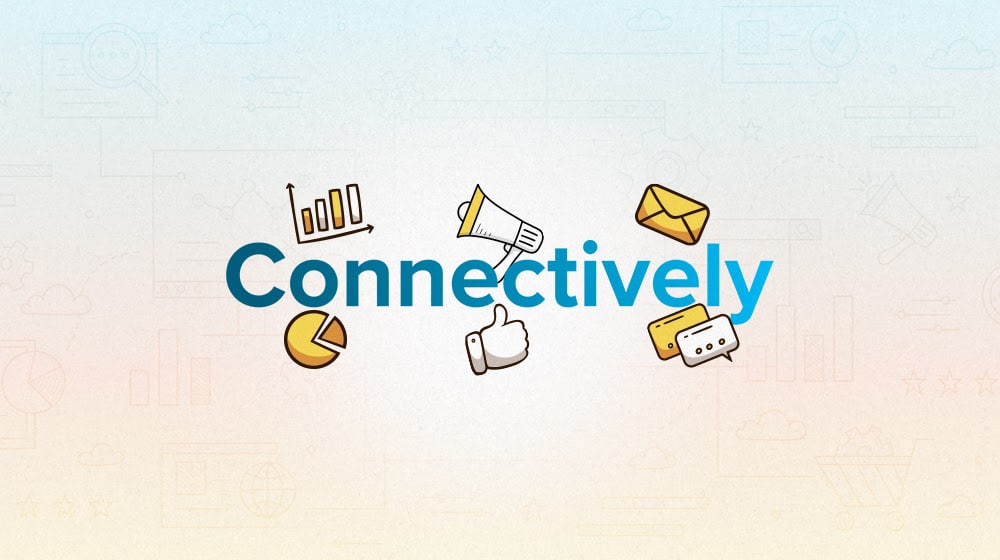
In our current fast-paced world, where deals are made or lost in a matter of days, and public relations is an incredibly important aspect of marketing, it's no surprise that tools and platforms exist to streamline and improve the process.
CisionOneis one such tool, and while you may not have heard of it before, chances are good that you're familiar with it already!
 30 Second Summary
30 Second Summary
You'll find Connectively is simply HARO's new name and updated version. You get access to media queries and can pitch journalists directly with their platform instead of email. The free plan lets you send 5 pitches monthly, while paying $19/month increases this to 15 pitches and adds features like email alerts and saved searches. To succeed, you need to submit quickly, make your pitches relevant and custom-tailored and avoid using AI or templates. Above all, focus on helping journalists rather than pushing for backlinks.
HARO Became Connectively, Connectively Became CisionOne
CisionOne is two things.
First, CisionOne is a revamp of an existing platform under a new name. It's not a secret; in fact, when you visit Connectively.us, it's right there at the top: "The New Home of HARO." Funny enough, they already changed names. Again. Twice in one year. Now they are called CisionOne.
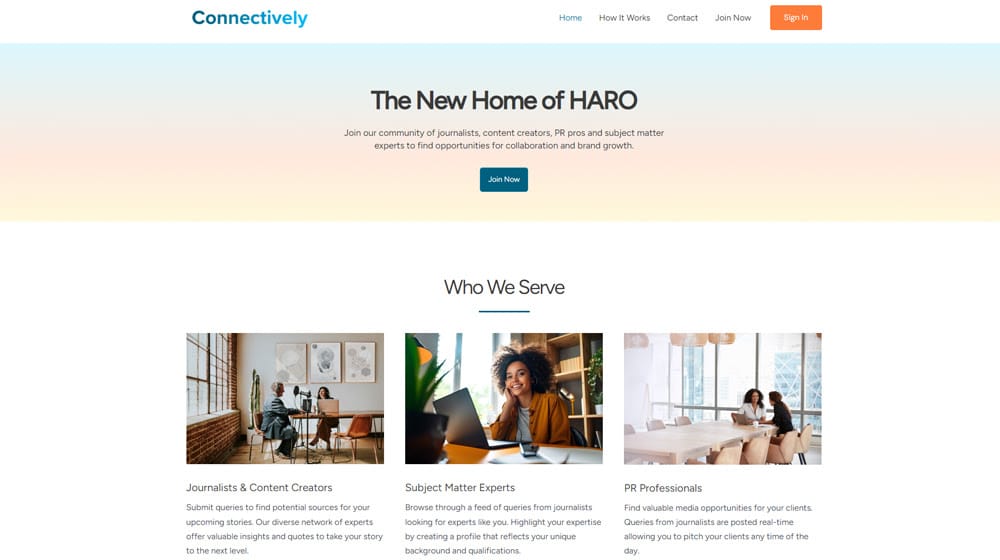
Secondly, CisionOne is a revamp of Connectively, which was a revamp of HARO.
Yes, I know, I'm saying the same thing twice, but I mean it in a different way. CisionOne and Connectively are the same as HARO under the hood, at least in terms of concept. Journalists and media personalities can put out queries or topics seeking experts; experts and site owners can submit pitches for their ability to contribute to the project the journalist is creating.
All of that is the same, so how is it different?
How is CisionOne Different From Connectively and HARO?
It's mostly a refresh, revamp, and change to how the details work. Details include:
- A newer interface and refreshed user dashboard that is faster, more responsive, and more modern than the old HARO infrastructure.
- Better pitch tracking and monitoring than previously available (which frequently simply didn't update.)
- A better database of media opportunities and, critically, filters for digging through them to find exactly what you fit the best.
- Less reliance on email newsletters and notifications, and more done right there on the site.
Another big change is a more standardized pricing model. With HARO, you had four pricing plans: free, $19, $49, and $149 per month. The higher-tier plans gave you more options for keywords to attach to your profile and more pitches you could send at a time.
Connectively changes this up and does away with the top two plans, which leaves you with just a free plan and a $19 per-month plan.
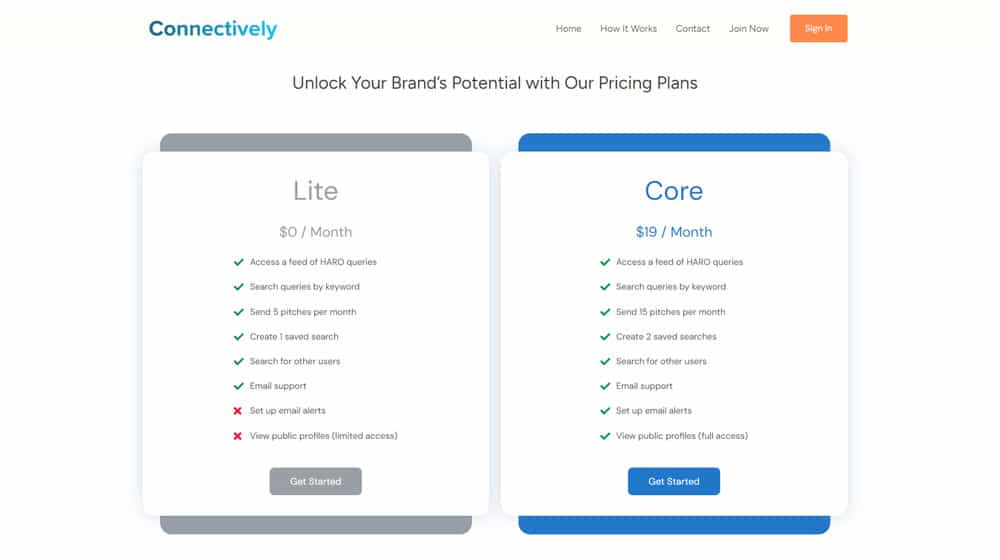
The free plan gets you:
- Access to the queries feed.
- Ability to search the query feed by keyword.
- Ability to send up to 5 pitches per month.
- Ability to save one set of search parameters.
- Ability to search for other users specifically.
- Access to email support.
The paid plan has all of the above, but also gives you:
- 10 more (so 15 total) pitches per month.
- A second saved search.
- Email alerts.
- Full access to view public profiles of other users.
You can also pay for additional pitches per month, though they don't say how expensive those packages are.
The biggest change is aggregating everything onto the website instead of pummeling your inbox with "opportunities" that would get ignored, filled up before you checked, or even get lost in a spam filter. HARO and Connectively had all sorts of issues, and their heavy reliance on email to do everything was a huge part of many of them, so this is a welcome change. The increase in filtering options and the removal of the expensive, largely useless higher-tier paid plans helps as well and can potentially even increase confidence in the platform, as this revamp is not a clear money grab.
As for whether or not CisionOne will shake out as a great option or not, well, that remains to be seen. Revamping the platform and maintaining continuity between them for pitches and opportunities is a good sign, at least.
HARO and Connectively are both already shut down or "sunsetted".
How Can You Get the Best Results from CisionOne?
Using Connectively is a lot like using HARO. With that in mind, I'm going to run down and update my tips from my Getting the Most Out of CisionOne post from a while back.
1. Be quick on the draw. More than ever, the media folks making use of CisionOne are going to be positively flooded with pitches. The sooner you get yours in, the more chance you have of consideration before it fills up and goes away. I'm not sure if paid subscribers get priority access since the priority for email lists isn't there anymore, but there will likely be some advantages to paying, so I wouldn't be surprised. Either way, the sooner you get your pitch in, the better.
2. Focus on relevance. CisionOne only lets you do five pitches per month on the free tier and fifteen on the paid tier, so you need to make each one of them count unless you're willing to pay for more. Frankly, paying for more is probably going to be the way to go. Make use of keyword search and filtering options to find the most relevant opportunities to send your pitches to.
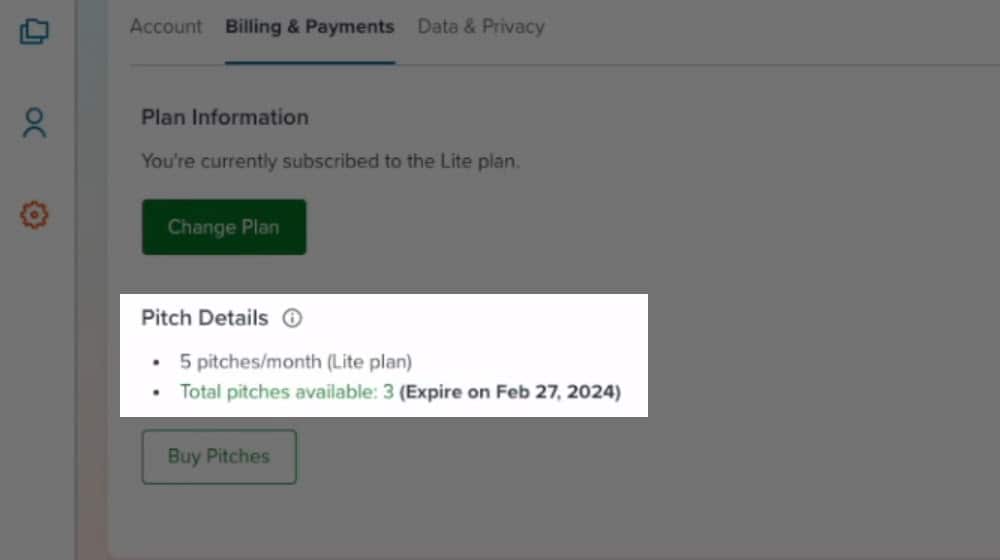
3. Include a custom-tailored response to the opportunity. Skip the flowery language, keep your "about me" to a minimum with just enough detail to prove you have the authority to speak on the subject, and make the bulk of your pitch a snappy, high-density, valuable response to the actual opportunity. Spending an extra couple of minutes to tailor your pitch will boost your success rate.
4. Avoid templates. In particular, the most basic templates don't have the detail-oriented response and density of information relevant to the opportunity that you really need in order to be successful on CisionOne. It's also very easy for a bot to fill out a template, and you can bet the most prominent users on CisionOne are going to be seeing a ton of basically identical pitches they need to filter through and ignore. The more your response looks like a template, the less likely you are to get the time of day, let alone a link, out of it.
5. Don't focus on what you get out of it. You're there to help a reporter, even if that's no longer part of the name. You aren't making a sales pitch, you aren't negotiating, you aren't requesting a link in exchange for your information and expertise. While some of that is expected, like the link, sometimes all you get out of these is a citation, and that's good enough. The more you try to be aggressive with sales and negotiation, the less likely the recipient is to do anything other than file your response away in the old circular file.
6. Be an intermediary if the chance arises. Sometimes, a media opportunity on CisionOne will specify that they want someone from a board of directors, someone in charge of marketing, a VP of sales, or whatever. If you work for a larger company, you likely aren't any of those things. But you can potentially use your internal communications to reach out to those people and be an intermediary for the person in your organization, acting as a go-between to land the opportunity and get your exec on board without having them do the work themselves.
7. Promote your successful mentions. Media people mentioning you in exchange for the information they need is a good start, but you can build a larger relationship – even taking it beyond the confines of CisionOne – by promoting the content you're mentioned in. It's self-serving, obviously, but it helps with the journalist's metrics and helps them know you're in it for more than just a backlink.
8. Don't just rely on the pitch tracker. CisionOne, like HARO before it, has a problem where media and journalists can take and use information from the pitches they receive but never really engage with the platform, including not notifying when their piece is live. You'll have to set up things like Google Alerts and other notifications to find when those go live. Keeping an eye out for them can help you know your real success rate, not just what CisionOne shows.
9. Track who you've worked with in the past. This goes two ways: first, anyone you've successfully pitched through CisionOne or HARO in the past and anyone you've worked with outside of CisionOne. Leveraging that existing relationship can help out, especially in conjunction with the previous tip on promoting the content you're mentioned in. Journalists love it when they have repeat connections they can rely on.
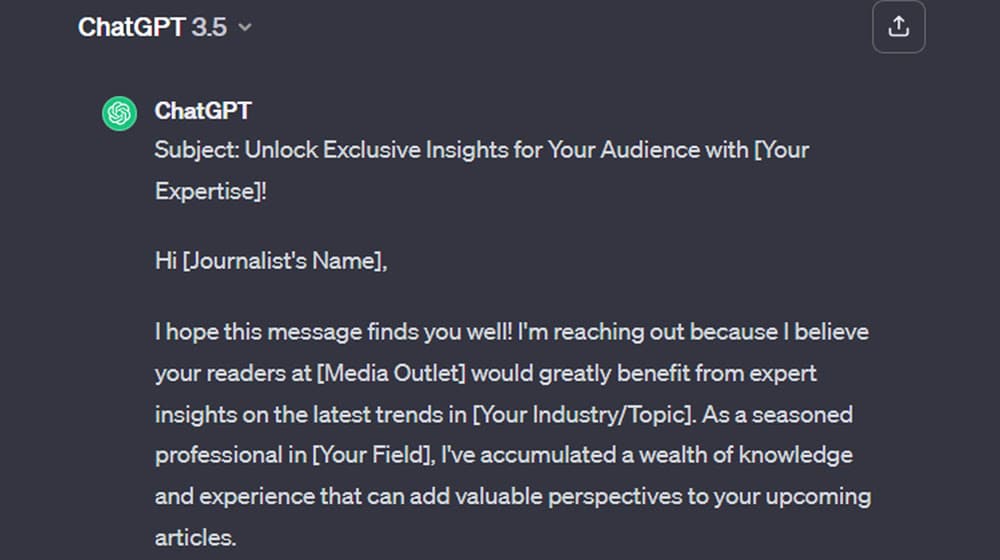
10. Avoid AI. This is a tricky one, but HARO before this rebranding and, I assume, CisionOne now is absolutely flooded with GPT-generated pitches. You can bet that journalists seeing dozens or hundreds of these hit their inbox after submitting an opportunity are going to be pretty turned off. Your job is to be the beacon that shines through it all with real, useful information, not just something GPT slammed out.
Are There Any Good CisionOne Alternatives?
While it remains to be seen how CisionOne will shake out and if the new changes and features will boost it beyond where HARO remained for years, it doesn't change the fact that businesses are always looking for ways to reach out, network, and gain citations and links around the internet.
This is another topic I've covered before, so I'll be brief. There are a lot of possible platforms out there to try, and to an extent, all of them are what you make of them.

Some of these alternative options include:
- Featured – Sort of a combination of Quora and CisionOne, this focuses on a Q&A format where experts answer the questions of media sites and authors.
- Source Bottle – A site that took the concept of HARO and made its own version. This one pretty much works the same way in concept, with a few differences in the details.
- PitchBox – One of the most highly recommended influencer and media outreach platforms I've seen, this is an all-in-one dashboard for sending and managing your outreach efforts. The downside is that it's all on you; you're reaching out, and the media isn't coming to you.
- PitchRate – Another HARO-like, this one is relatively small, with only a few thousand journalists and often fewer than a hundred active requests at once, but it's still a viable option simply because it's not as inundated.
- PitchResponse – Framed as a more expert-oriented version of CisionOne, they took the basic HARO format and tried to streamline it, adding many of the features that, ironically, CisionOne has added in their revamp.
There are others available as well, which you can see if you click through to the whole post I linked above. These are just some of the more popular options for media outreach and networking.
Summing Up
To wrap things up, I'm cautiously optimistic about CisionOne.
It's a good way to gatekeep the system away from the people who have $10 and a ChatGPT window open and who will ruin the platform for everyone by spamming every opportunity despite not having any real credentials themselves.
- If you've ever used HARO on the other side (as a journalist asking for pitches), you'll know exactly what I mean. Thousands of pitches within hours and an email inbox that gets completely overrun with junk.
- If you're a marketer, you know how hard it is to stand out on CisionOne/ HARO / Connectively. Check out our done-for-you service that pitches on your behalf on CisionOne, it may make sense for you to oursource this!
CisionOne does have some issues to sort out, though, including just not adding enough new features and functionality to stand up to the competition. Bringing the service out of the email-centric dark ages that HARO was buried in is a good first step, but it's also a first step that should have been taken five or ten years ago, not in 2024.
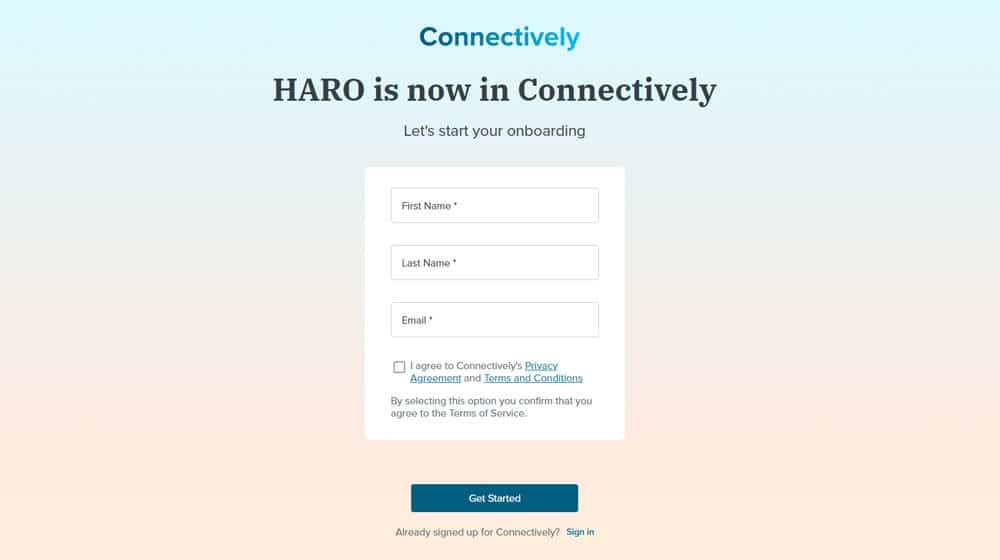
Will they keep improving? Will CisionOne be one of the best platforms for media and journalist outreach in 2024 and beyond? That remains to be seen.
I'm going to be giving it a try, and if any of you do, make sure to tell me how it goes in the comments below. I love hearing other perspectives!



 30 Second Summary
30 Second Summary
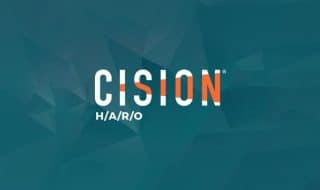
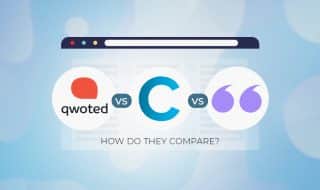

Comments